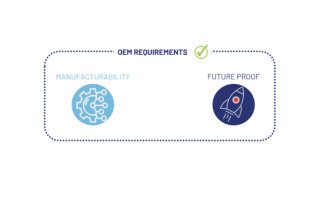Projected Capacitive (PCAP) Touch Screens in Defense and Aerospace
November 07, 2019
Whitepaper
Now is the right time for defense and aerospace organizations to start using the same touchscreen technology used in today?s smartphones (projected capacitive (PCAP) touch screens). Learn more...
There is no question that touch screens are a useful asset for warfighters in the field enabling then to make selections, enter information, and interact with systems without the need for a space-consuming mouse or keyboard. However, finding touch screen technology that can handle the demands of harsh environmental conditions encountered in aerospace and defense applications is challenging. This white paper discusses different touch screen technologies and why now is the right time for aerospace and defense organizations to start using Projected Capacitive touch screen technology, the same touch screen technology that is used in today's smart phones.
Download Whitepaper




